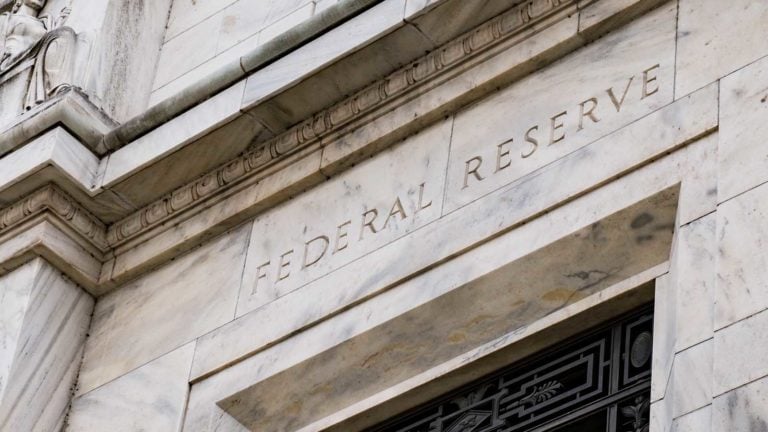The Federal Reserve has engaged in a significant campaign to try to rein in inflation. The Fed has made one 25 basis point hike and a 50 basis point hike already. The latter hike, in May, was the largest hike in 22 years. Analysts now expect at least one more 50 basis point hike this summer and additional 25 or 50 basis point hikes after that.
Fed Chairman Jerome Powell has made it clear that the current inflation rate is unacceptable, and that the Central Bank will continue taking aggressive measures to stamp it out. This accelerated rate-hiking campaign has been a major contributor to the stock market’s uneven performance over the past six months. Let’s zoom out though: What do higher interest rates mean for stocks and what can investors do to prepare themselves?
First, The Bad News
Overall, the effect of rising interest rates is a negative one for the stock market. It’s an old adage that traders shouldn’t fight the Fed, after all. When the Fed is raising interest rates, it is in effect reducing the amount of liquidity in the financial system. This acts as a sort of gravity that drags down most assets. When you take dollars out of the pool of capital sloshing around the markets, you typically see a drop in the housing market, stocks, cryptocurrency and so on.
The effect is particularly pronounced in what are known as long-duration assets. These refer to investments which produce little to no profits or cash flows today. Rather, the value of the investment comes from the potential for tremendous growth in future years.
In a world with zero interest rates, there was little opportunity cost to owning Bitcoin (CCC:BTC-USD) or a hot cloud SaaS company. After all, it’s not like the bank was paying any interest on savings accounts. So why not shoot for the stars with more speculative investments?
Now that interest rates are going up dramatically on fixed-income investments, however, there’s a much clearer tradeoff. People can suddenly get meaningful cash flows from buying bonds. Also, certain investments in areas such as energy and commodities are throwing off huge dividends. There’s suddenly a much larger opportunity cost to owning a cryptocurrency or tech stock that doesn’t produce profits or pay dividends today.
The Fed is a primary driver in deflating asset bubbles for precisely this reason. By making it costlier to invest in speculative holdings, rising interest rates tend to nip investor enthusiasm in the bud.
In other words, a Fed rate hike cycle demands that investors proceed with caution. But it’s hardly a death knell for the market either.
Rising Interest Rate Beneficiaries
Certain segments of the economy can directly benefit certain stocks and sectors. Banks, for example, make money on the spread between the rates they obtain on loans such as mortgages and the rates they have to pay out to depositors for savings accounts, checking accounts, and so on.
Typically, in a rising rate environment, banks are able to collect a larger spread between these rates, leading to rising profitability. A bank like Goldman Sachs (NYSE:GS), for example is trading at just 8.5 times forward earnings now and offers a reasonable dividend yield.
Another beneficiary of rising interest rates are stock brokerages such as
Charles Schwab (NYSE:SCHW). Brokerages typically pay little if any interest on their customers’ cash deposits. But they are allowed to invest said customer cash into fixed income products. Thus interest rates surging creates a large additional profit stream from that idle cash for the brokerage industry.
A third winner in a rising rates environment can be commodities and energy companies. In many cases, such as we are seeing now, higher interest rates are directly tied to higher inflation and soaring prices of raw materials. As long as the current inflationary wave keeps up, firms such as oil & gas producers, fertilizer manufacturers, and copper and iron ore miners should perform well.
The 60/40 Portfolio
Traditionally, many financial advisors have offered some variation of the 60/40 portfolio as an ideal mix. This refers to a portfolio of 60% equities such as the S&P 500 or Nasdaq index funds and a 40% allocation to bonds.
Bonds and stocks tend to have a fairly low correlation to each other. Bonds often go up in price during bad economic periods, as people seek the safe haven of fixed income. Meanwhile, stocks tend to rally during strong economic periods. Thus, these assets play off each other, with one tending to do well when the other is underperforming. With consistent rebalancing between the stock and bond portions of a portfolio, investors can leverage this dynamic to booth smooth and enhance their returns.
How does this effect impact things in 2022? Right now, bonds have dropped dramatically. Recall that when interest rates go up, than means bond prices are going down, and vice versa. Thanks to the swift economic recovery since 2020, economic activity and inflation surged, which reduced demand for bonds.
This has caused the iShares 20 Plus Year Treasury Bond ETF (NYSEARCA:TLT), which owns long-duration U.S. government bonds, to plunge this year. TLT is down 22% year-to-date, and is now trading back at 2018 prices. That could make it an interesting time to buy some bonds and counterbalance a portfolio’s equity exposure.
The Bottom Line
To be frank, overall, higher interest rates are a negative for stock market investors. However, it’s not necessarily anywhere as bad as certain pundits may make it out to be. While certain sectors such as technology usually fare poorly in a rising-rates environment, a tactical investor can find significant opportunities in a higher interest rate environment.
On the date of publication, Ian Bezek held a long position in GS stock. The opinions expressed in this article are those of the writer, subject to the InvestorPlace.com Publishing Guidelines.

